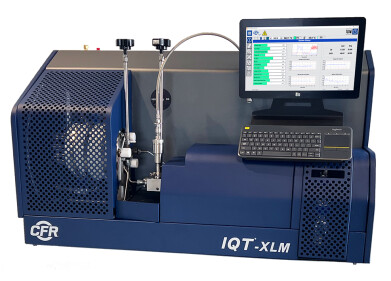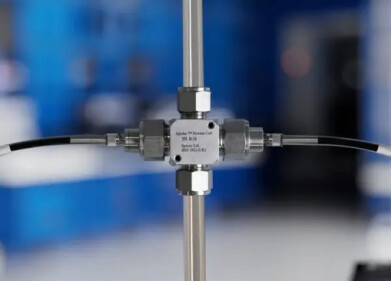Analytical Instrumentation
Setting the ASTM & EN Standards for Oily Residues Analysis in LPG by GC
Oct 18 2013
To control the residue content during the LPG production, transportation or storage laboratories now have two global analysis standards at their disposal. One standard is the ASTM D7756-13 method for residues analysis in LPG by Gas Chromatography (GC) with the Liquefied Gas Injector (LGI). The latest standard is the harmonised EN 16423 method dedicated to the determination of residue in LPG with the LGI.
Both standards are based on direct, on-column LPG injection and use the innovative large volume injection technique developed by Da Vinci Laboratory Solutions (Netherlands). The technique was introduced in 2010 to inject liquefied Propane/Butane streams at room temperature directly onto a GC column and approved as ASTM D7756 in 2011.
The direct injection approach of the LGI includes the proven gasoline direct injection technique used by the automotive industry to inject fuel into the automotive engine combustion chamber. The LGI is configured on top of the GC and consists of a high pressure injection valve connected to an on-column needle.
The LGI pressure station and the GC enable a constant pressure of the liquid sample to inject a representative and repeatable amount of sample. The sample container is installed on the front side of the pressure station and is pressurised to 25 bar nitrogen. The waste sample is vapourised and vented to a central waste system. The controller box on top of the right side of the GC drives the injector valve timing.
In 2012 ASTM D7756 was revised to extend the application range of the method to the analysis of light contaminants such as benzene, toluene, C7-C10 hydrocarbons and DIPA in LPG. This summer ASTM published the 2013 revision for ASTM D7756 to include a full precision as a result of the first Round Robin conducted in 2012. The precision statement is also specified in the EN 16423 method.
The LGI offers laboratories a safe, fast and accurate GC method for the complex analysis of oily residues in C3 and C4 streams. Benefits include: GC alternative for the labour intensive ASTM D2158, EN 15470, EN 15471 & ISO 13757 methods; Approved as ASTM D7756-13 and EN 16423; No open air evaporation of LPG; High pressure injection directly onto GC column up to 30 bar; Analysis time < 30 minutes; Detection limits of <1 mg/kg for individual components; Flexible sample size, micro-second range up to 250 mS (large volume); Oily residue analysis range of 10 - 600 mg/kg.
For the petrochemical industry several new LGI applications are available for the trace analysis of DIPA in LPG and VCH, TBC and NMP in Butadiene. Read the full article from Petro Industry News to learn more about the LGI and its applications or visit the Da Vinci website to download the application notes.
Digital Edition
PIN 25.5 Oct/Nov 2024
November 2024
Analytical Instrumentation - Picturing Viscosity – How Can a Viscometer or a Rheometer Benefit You? - Sustainable Grease Formulations: Evaluating Key Performance Parameters and Testing Method...
View all digital editions
Events
Dec 03 2024 Dusseldorf, Germany
Dec 08 2024 Anaheim, CA, USA
Turkey & Black Sea Oil and Gas
Dec 11 2024 Istanbul, Turkey
Dec 19 2024 Aurangabad, India
Jan 20 2025 San Diego, CA, USA



















